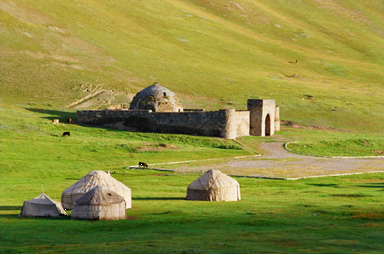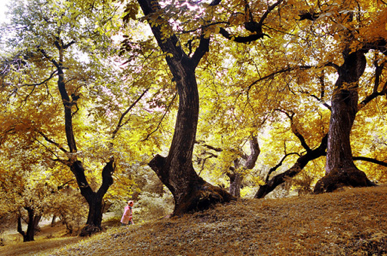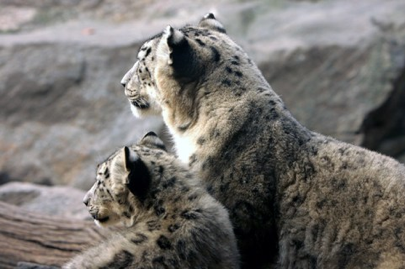Kyrgyzstan, a part of the Great Silk Road, has so much to share with the world. This picturesque country has a huge variety of attractions, among which the main ones are mountains and lakes.
Mountains Tien Shan and Pamir, with the world famous Victory Peak and Lenin Peak, made Kyrgyzstan a destination for climbers. Kyrgyz mountain gorges are also ideal for trekking, while rivers are great for rafting.
The mountain gorge “Jeti-Oguz” is a wonderful place full of flowers in spring and summer times. “Jeti-Oguz” derived its name (Kyrgyz: “Seven Bulls”) from the chain of the red stoned rocks, which resemble seven bulls lying on the ground. A local attraction is the “Broken Heart” rock, which comes from a legend that tells about a young beautiful woman who had her heart broken when two men died in a fight for her love. Now, “Broken Heart” rock is a place for young couples where they confess about their feelings and believe that their love will never fade away.
Among the lakes, one of the most beautiful is Issyk-Kul Lake, which translates from Kyrgyz as “warm lake” due to its never freezing water while surrounded by the snowy peaks. People of Kyrgyzstan consider it to be a true pride and a jewel of the country. Located in the northeastern part of the country, between the ridges of the Northern Tien Shan at an altitude of 1609 meters above sea level. One of the stopovers of the Silk Road, Issyk-Kul is believed to be the place of origin of the Black Death, which hit Europe and Asia in 14th century. Nowadays, Issyk-Kul is the second lake in the world for water clarity after Lake Baikal in Russia and an ideal summer place with its golden sand beaches and warm climate.
Kyrgyzstan also has architectural sights. One of them is “Tash Rabat”, which is located in the Naryn region of Kyrgyzstan at an altitude of 3500 meters above sea level. Built in the 15th century, Tash Rabat served as a caravanserai on the Silk Road, an inn for merchants and travelers. It is also a place for argument of the cultural origins of the site for historians, as some say it was built during the Middle Ages, while others say it is ruins of the Christian Nestorian monastery of the 10th -11th centuries.
Related article: “KYRGYZSTAN CULTURE”
 In the Photo: Tash Rabat
In the Photo: Tash Rabat
Another unique piece of nature in Kyrgyzstan is “Arslanbob”, located in the southern part of the country in the Jalal-Abad region; it is the biggest relict walnuts forest in the world. Arslanbob produce around 1,500 tons of walnut harvest per year, as well as up to 5,000 tons of apples, pistachios and plums. It is also a place of two beautiful waterfalls that are perfect for chilling in the hot summer, green meadows and above all these a snowy peak “Babash-Ata”. A legend says that Alexander The Great, during his campaign on Sogdiana got to the area of Arslanbob from where he took fruits and nuts of the local forest and introduced and cultivated them in Greece. Based on this legend, Kyrgyz walnuts are nowadays also known as “greek nuts”.
In the Photo: Arslanbob forest
There so many places to visit in Kyrgyzstan in addition to the above mentioned. Tourism sector is developing despite of the economic problems. In addition to the mostly summer-type of attractions, Kyrgyzstan is currently developing winter ski tourism as well. Mountains are giving amazing opportunities for its further development. Currently there are few ski resorts that are fully equipped with modern ski lifts, routes with varying length and complexity, hotels, restaurants, conference halls and parking areas.
One of the best ski resorts is “Karakol” at an altitude of 2300 meters above the sea, located in the Issyk-Kul region 7 km away of the city of Karakol. During the Soviet times it was used by the members of USSR Olympic Team. In 2005 it went under renovation and currently it has new routs with the highest point at 3040 meters. In addition to the general facilities, there is a spa, an ice-ring and a helipad.
In the Photo: (right) “Karakol” Ski Resort
Finally, there are the cities. Bishkek, the capital, offers great examples of Soviet architecture and monuments, like universities, government buildings and the Theatre of the Opera and Ballet. The Ala-Archa National Park is just 40 km away from Bishkek; it is an alpine park with gorges and rivers. Ala-Arch Park also includes a very small population of rare and endangered snow leopards. Another place is a Sarychat-Ertash State Nature Reserve, located in the Issyk-Kul province and working under the International Union for Conservation of Nature and Natural Resources (IUCN). Snow leopard is a national animal of Kyrgyzstan, but recently cases of illegal hunting by local and foreign poachers on snow leopards and other rare animals, such as Marco Polo sheep that is known for its long and spiraling horns, became more frequent, thus putting at risk beautiful fauna of Kyrgyzstan.
For a full mindmap behind this article with articles, videos, and documents see #kyrgyzstan
Photo Credit: Snow Leopard Trust
In the South, Osh, the second biggest city and also referred to as the southern capital, gives the visitor a more traditional feeling, with its ancient mosques. Sulayman Mountain, the only UNESCO World Heritage site in the country, watches over the city.
More and more people discover Kyrgyzstan every year, more and more agencies around the world organize trips into the heart of Central Asia. During recent Expo-2015 that was held in Milan, Kyrgyzstan was successfully presented in the Fruits and Legumes Cluster showing it’s agricultural production, national dishes and traditional goods.
Video created by: Antares Creative Group and Chamber of Commerce of Kyrgyzstan, especially for Milan Expo-2015
Tourism in Kyrgyzstan continues to develop and the country is ready to welcome international friends from all over the world.
Recommended reading: “PUTIN PEAK AND SOVIET STYLE: KYRGYZSTAN, THE NEW CLIMBING HOTSPOT”
_ _
Special thanks to the Embassy of the Kyrgyz Republic in India for partially providing info and pictures in this article.













